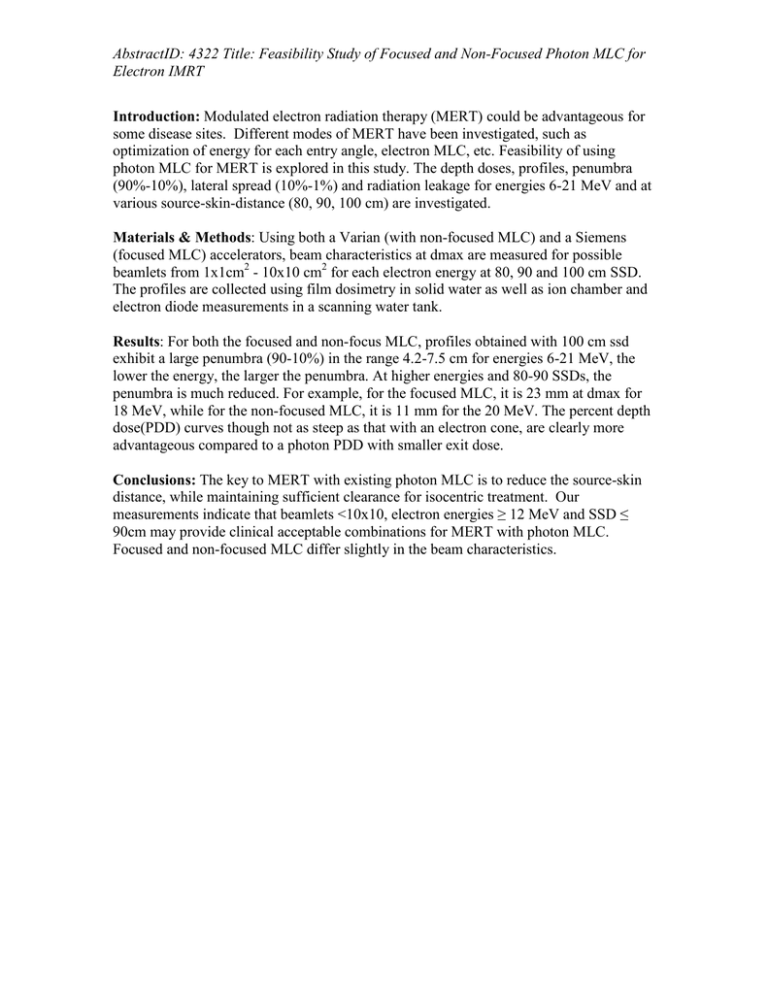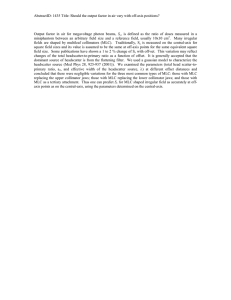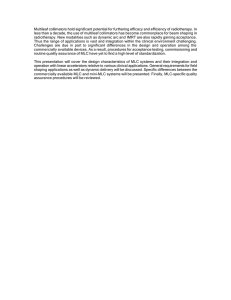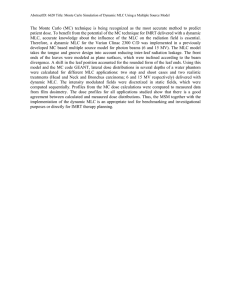AbstractID: 4322 Title: Feasibility Study of Focused and Non-Focused Photon... Electron IMRT Introduction:
advertisement

AbstractID: 4322 Title: Feasibility Study of Focused and Non-Focused Photon MLC for Electron IMRT Introduction: Modulated electron radiation therapy (MERT) could be advantageous for some disease sites. Different modes of MERT have been investigated, such as optimization of energy for each entry angle, electron MLC, etc. Feasibility of using photon MLC for MERT is explored in this study. The depth doses, profiles, penumbra (90%-10%), lateral spread (10%-1%) and radiation leakage for energies 6-21 MeV and at various source-skin-distance (80, 90, 100 cm) are investigated. Materials & Methods: Using both a Varian (with non-focused MLC) and a Siemens (focused MLC) accelerators, beam characteristics at dmax are measured for possible beamlets from 1x1cm2 - 10x10 cm2 for each electron energy at 80, 90 and 100 cm SSD. The profiles are collected using film dosimetry in solid water as well as ion chamber and electron diode measurements in a scanning water tank. Results: For both the focused and non-focus MLC, profiles obtained with 100 cm ssd exhibit a large penumbra (90-10%) in the range 4.2-7.5 cm for energies 6-21 MeV, the lower the energy, the larger the penumbra. At higher energies and 80-90 SSDs, the penumbra is much reduced. For example, for the focused MLC, it is 23 mm at dmax for 18 MeV, while for the non-focused MLC, it is 11 mm for the 20 MeV. The percent depth dose(PDD) curves though not as steep as that with an electron cone, are clearly more advantageous compared to a photon PDD with smaller exit dose. Conclusions: The key to MERT with existing photon MLC is to reduce the source-skin distance, while maintaining sufficient clearance for isocentric treatment. Our measurements indicate that beamlets <10x10, electron energies 12 MeV and SSD 90cm may provide clinical acceptable combinations for MERT with photon MLC. Focused and non-focused MLC differ slightly in the beam characteristics.




